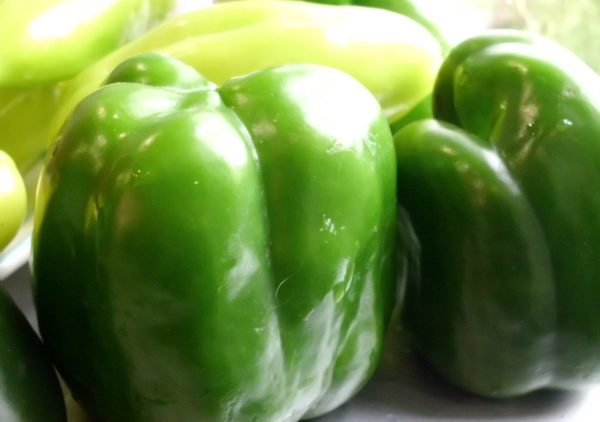
In a review compiled annually for vegetable growers who are constantly searching for varietal varieties, and for those who grow vegetables on an industrial scale, Atlantic pepper F1 is on the list of the best early hybrids. Characteristics and yields, posted photos of a large thick-walled vegetable, reviews of those who have already grown an early variety - all these are grounds for entering the TOP list.
Over the course of 2 years, the description of the variety invariably attracts new applicants to purchase seeds for cultivation, and the demand and marketability of the seed potential serve as the basis for its inclusion in the first positions of the rating.
“Atlantic” F1 pepper is listed in the register as the undisputed success of breeders: the characteristics and description of the variety contain two universal words (with respect to the type of cultivation and application), and two words very (very large fruits and very thick walls of pepper). The photos posted in the description impress with their scale and brightness of the colors, the reviews are always positive, the average yield is indicated at 9 kg per square meter. m., but this is not the limit.
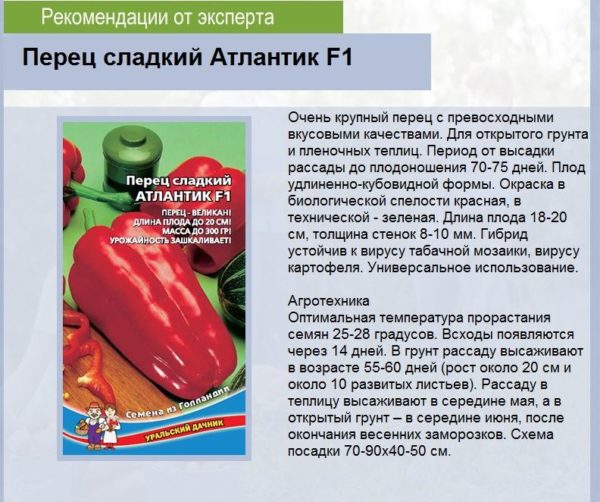
Content
Description of the variety and useful characteristics
The fruits of Atlantic F1 are described in different ways. It is called similar to a prism with three faces, elongated, barrel-shaped, cylindrical. In fact, the early large-fruited hybrid has the classic shape of bell pepper, comparing favorably with similar varieties with its size and taste.
Cut pepper in diameter has up to 12 cm, its skin is very thin, and the flesh is 10-11 mm thick. In length, the vegetable grows to 17-20 cm, and its average weight is 350-450 g. Under good growing conditions and careful watering, gardeners were able to grow fruits about half a kilogram. Hybrid bushes grow over a meter in height and are distinguished by a strong stem and leaves of a saturated bottle shade.
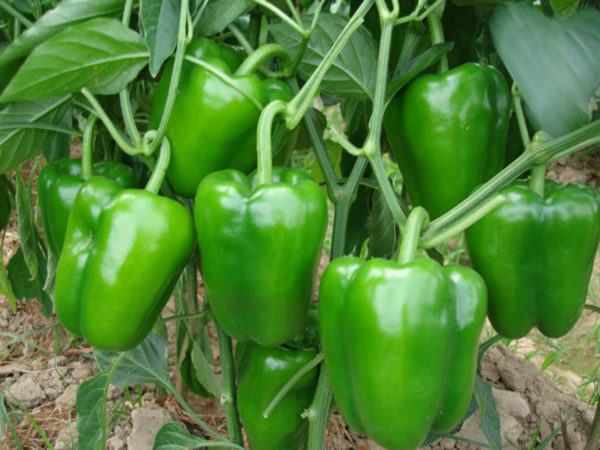
One of the components of the success of a hybrid variety is its taste. According to consumer reviews. his taste is original, fresh and bright, while preserving all the taste characteristics of salad pepper. They prefer to use it fresh because of the composition in which the studies showed the presence of B vitamins, PP and C vitamins (in significant quantities) and a whole spectrum of trace elements. The mineral-vitamin complex makes it useful in the treatment of certain diseases, makes it possible to include in the composition of diets with exhaustion, nervous disorders, vitamin deficiency, anemia and insomnia.
Atlantic F1 retains most of its valuable qualities, but during heat treatment, while retaining the characteristics of taste, a valuable variety of salad pepper loses some of the useful elements. Juicy and sweet pulp makes it a particularly valuable product for the preparation of canned vegetables, which include sweet pepper.
In a state of technical ripeness, the variety is a radical green color, which, if properly stored and transported, can turn into red.
Specificity of planting seedlings
High-quality seeds are provided from the Dutch manufacturer by the agricultural company Ural summer resident. In the Urals, they prefer to plant pepper seedlings, because the plant is thermophilic and can die already at 0 degrees.
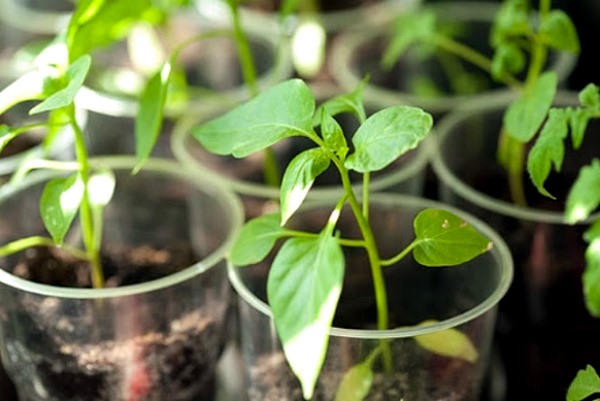
The specifics of growing a Dutch hybrid is in high-quality seedlings. Failure to comply with the requirements for the preparation of planting material in a temperate climate can lead to the fact that the bushes will become dwarf and will produce small fruits. An early thick-walled hybrid is planted in landing boxes according to the 6x6 or 7x7 scheme, or in peat pots.
Both methods are equivalent, but, when transplanted into the soil, peat transferred with the plant will help to maintain the delicate root system intact. The optimum temperature for growing seedlings is + 20-230С, but in order for the seeds to germinate successfully, the temperature should be at least + 250С. In no case should you lower the temperature below the specified limits, because it is noticed that already at + 150 ° C the seedlings stop growing.
The soil for planting is prepared from sawdust treated with urea (or sand), humus, peat, garden soil and compost. Additionally, a small amount of complex fertilizer is introduced, the seeds should not be deepened by more than 2 cm. During seedling growth, it will need to be fed again at the age of 12-14 days.
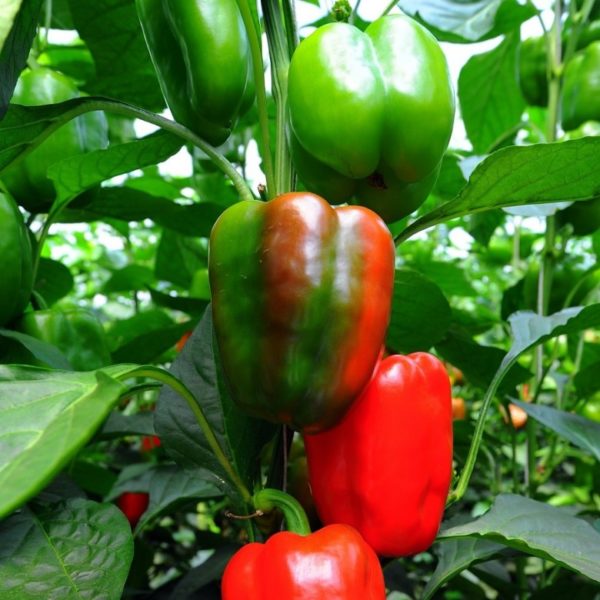
Landing time in temperate climates and in the southern regions is early February. In a more severe climate, seedlings are planted not earlier than the end of February, but more often in early March. Such terms are due to the thermophilicity of the plant, which can easily die at 0 degrees. The beds for planting must be fertilized in the fall, then the plant will immediately receive all the components necessary for its growth. To fertilize the beds under pepper, compost, humus and complex mineral fertilizers are added to the soil. Pickling seedlings is as necessary as watering, fertilizing and hardening before planting for a week.
A small amount of fertilizer can be applied to the soil in spring, but you must be extremely careful with nitrogen. An excess of nitrogen in the complex fertilizer leads to the fact that the pepper grows the stem and leaves, but gives very few flowers and ovaries. As soon as more than 7 leaves appeared on the seedlings, the plants can be considered ready for planting in open ground. If the weather does not have this, it is better to wait a bit and use the lunar calendar of the gardener to determine the optimal planting date. It should also be carried out in compliance with certain rules.
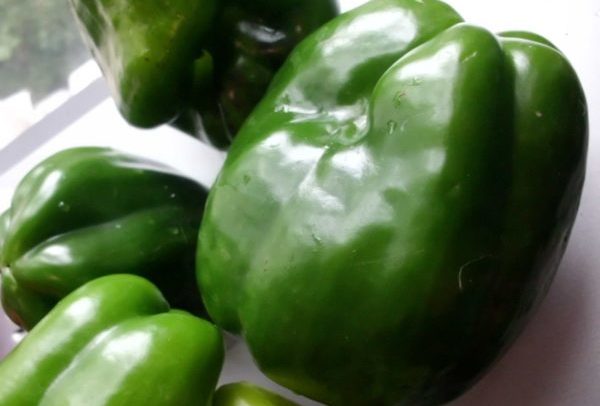
Basic requirements for planting hybrid Atlantic F1 in open ground
In order to get a significant harvest (which is very real, if you follow the rules of care), you need to remember some conditions. When choosing a plot for pepper, the following rules must be observed:
- legumes, pumpkin, tomatoes and potatoes should not grow on it before planting;
- hot peppers should not be anywhere nearby (cross-pollination does not exclude pollination by insects, and instead of sweet pepper, bitter can be easily obtained in this process);
- bell pepper does not tolerate both the open sun throughout the day and the permanent shadow;
- the plant is very sensitive to wind and drafts, and this circumstance must also be taken into account;
- planting of finished seedlings in open ground is carried out no earlier than 60 days after the planting of seeds;
- before planting pepper, seedlings must be hardened, taking out pots on the street and gradually increasing its stay in the fresh air;
- in the first week, the Atlantic should be covered with plastic wrap at night so that the plant does not freeze;
- pepper needs frequent, but not plentiful watering, drip is optimal;
- loosening the soil at the roots, or mulching to preserve moisture;
- if fertilizers with calcium and nitrogen are added during the flowering period, the fruit ovaries and flowering will become more intense.
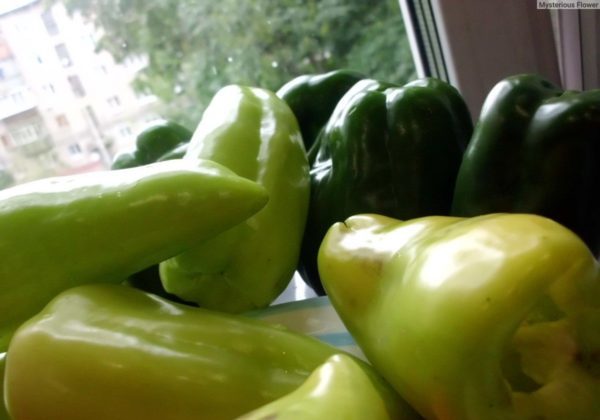
Grade Benefits
Variety of Bulgarian pepper Atlantic F1 has undeniable advantages, which make it a favorite in the seed sales market before the beginning of the summer season:
- large-fruited hybrid, which with skillful care can be grown to almost half a kilogram;
- grows on strong tall (up to 105 cm) bushes, the stalk of which in the process of growth becomes woody;
- suitable for growing in a greenhouse, under a film and in open ground;
- It is resistant to almost all types of pests and diseases;
- reaches technical maturity in 90-100 days;
- has a unique, distinct, sweet-fresh taste;
- suitable for freezing, cooking, eating fresh and canning;
- contains a lot of useful substances and can be used in diet therapy;
- earned meritorious reviews from those who had already grown it.
This is one of the most successful large-fruited hybrids, which are classified as mid-early varieties, with very tasty fruits and are regularly listed in the best varieties.




 Calorie pepper stuffed with meat and rice - BZHU per 100 grams
Calorie pepper stuffed with meat and rice - BZHU per 100 grams Gorky pepper - the best varieties for open ground
Gorky pepper - the best varieties for open ground Hot pepper seeds - the best varieties for open ground and reviews
Hot pepper seeds - the best varieties for open ground and reviews Capsicum tincture for hair - how to use and reviews
Capsicum tincture for hair - how to use and reviews